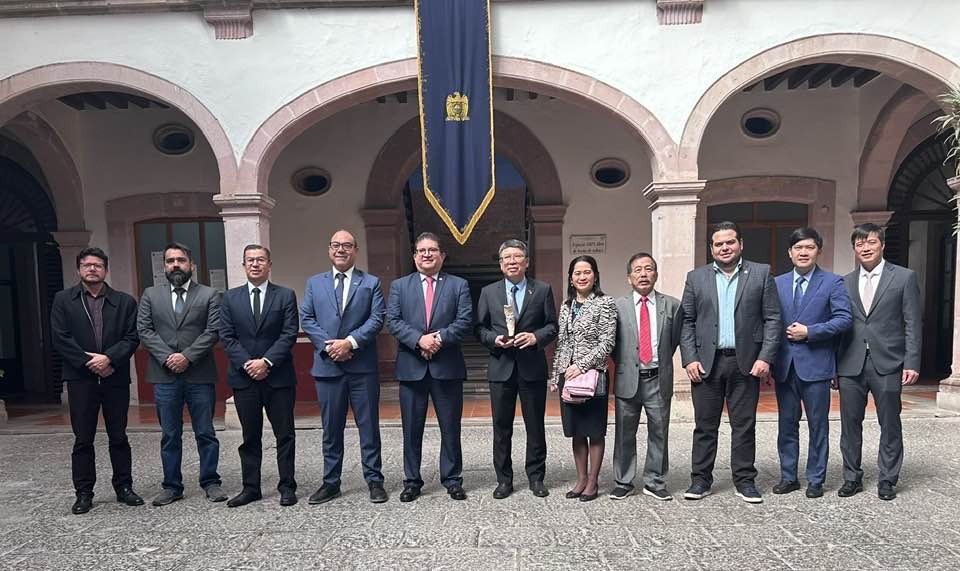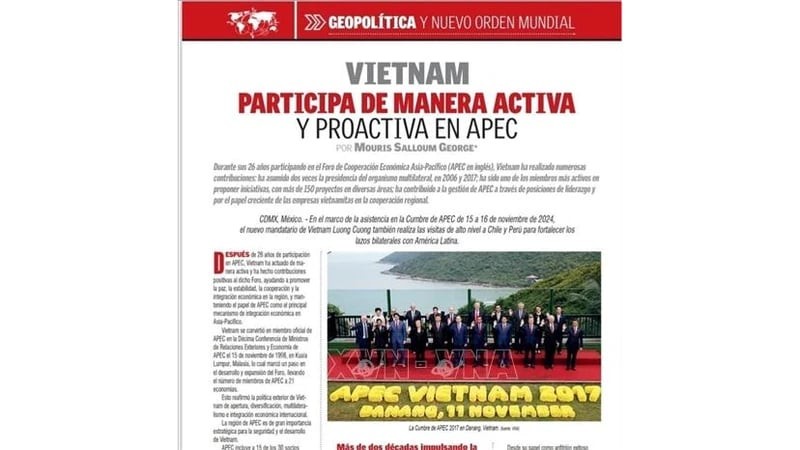Holiday Relaxation: Visit Las Grutas Tolantongo Mexico Hot Springs
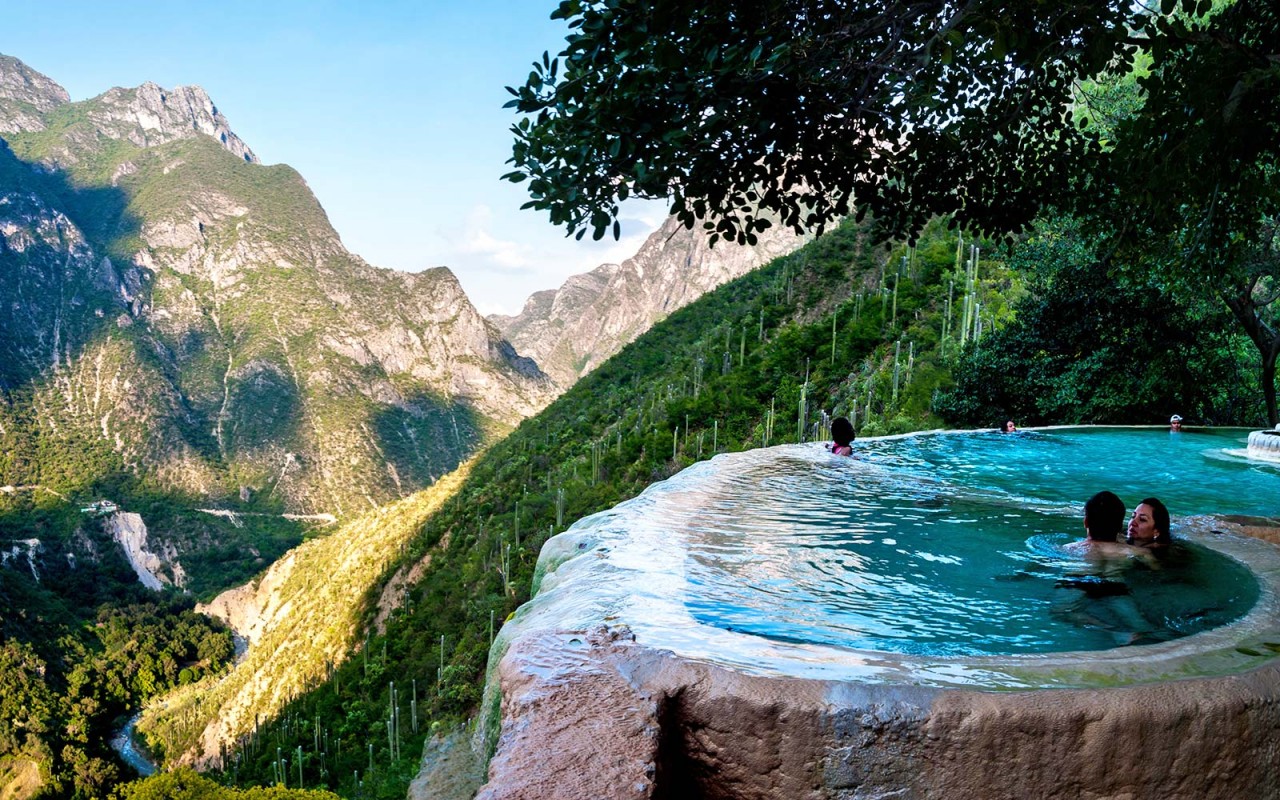 |
| Photo: Travel + Leisure |
Tolantongo is a box canyon and resort located 17 kilometres from Ixmiquilpan on Route 27 in the Mezquital Valley, State of Hidalgo in Mexico, It is about 1.5 hours northwest of Pachuca and 198 km or three-to-four hours northwest of Mexico City. The closest village to the resort is called El Cardonal and it is part of Cardonal Municipality.
Las Grutas Tolantongo, or the Tolantongo caves, are a collection of hot spring pools built into a cliff in Hidalgo. The definition of a bucket list destination, they sit three to four hours northeast of Mexico City in a picturesque canyon.
The pools are filled with warm, naturally mineral-infused water that's heated by the surrounding volcanic mountains. There are also caves and a tunnel to explore for a dose of adventure, a hot spring river to swim in, and a kid-friendly pool with a waterslide.
What is Las Grutas Tolantongo?
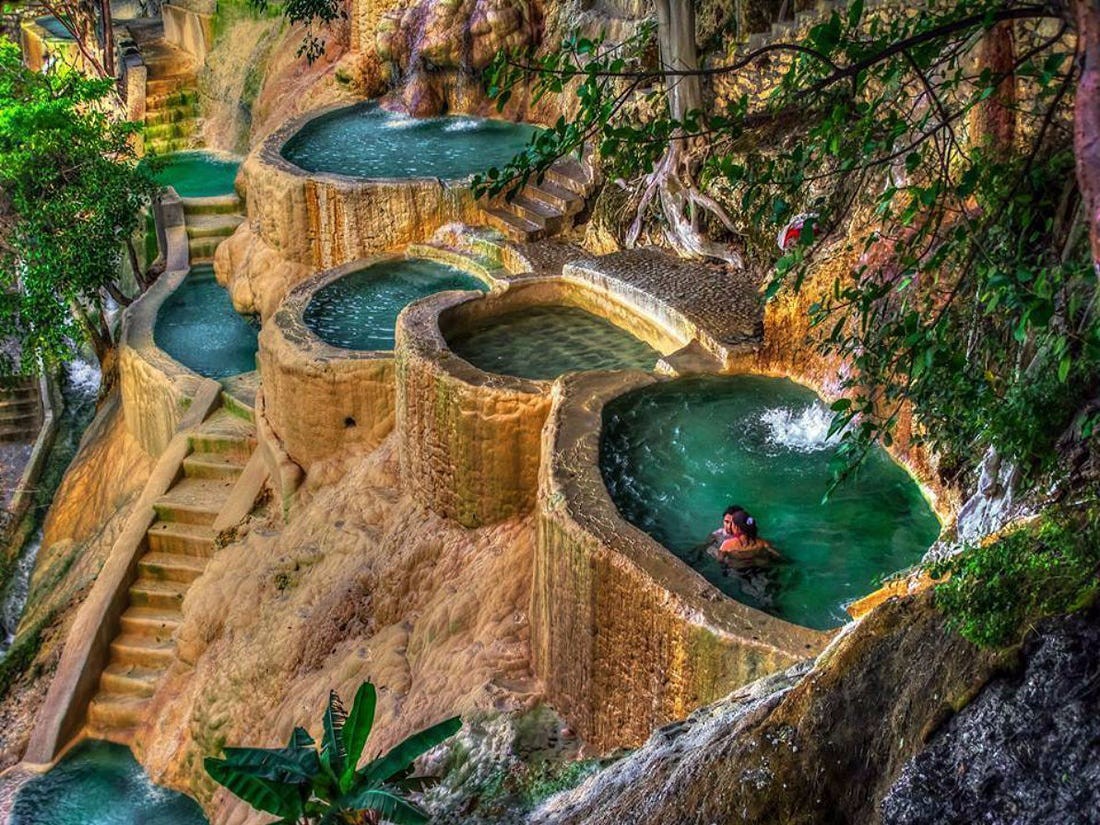 |
| Photo: Unusual Place |
Tolantongo is a turquoise water playground. It is located in San Cristobal city, in the state of Hidalgo, which is in Central Mexico. Tolantongo grutas is way up in the mountains, at 4,200-feet (1,280m) above sea level in Mezquital Canyon.
Mezquital is what’s known as a box canyon, meaning it’s shorter and narrower than larger river canyons. It is surrounded by hot springs and underwater thermal pools, which heat all the waters throughout Las Grutas de Tolantongo.
The word gruta means cave (or grotto), and there just so happens to be one here! Tolantongo is a large site, consisting of four distinct natural areas: the pools, the river, the tunnel, and of course, the cave.
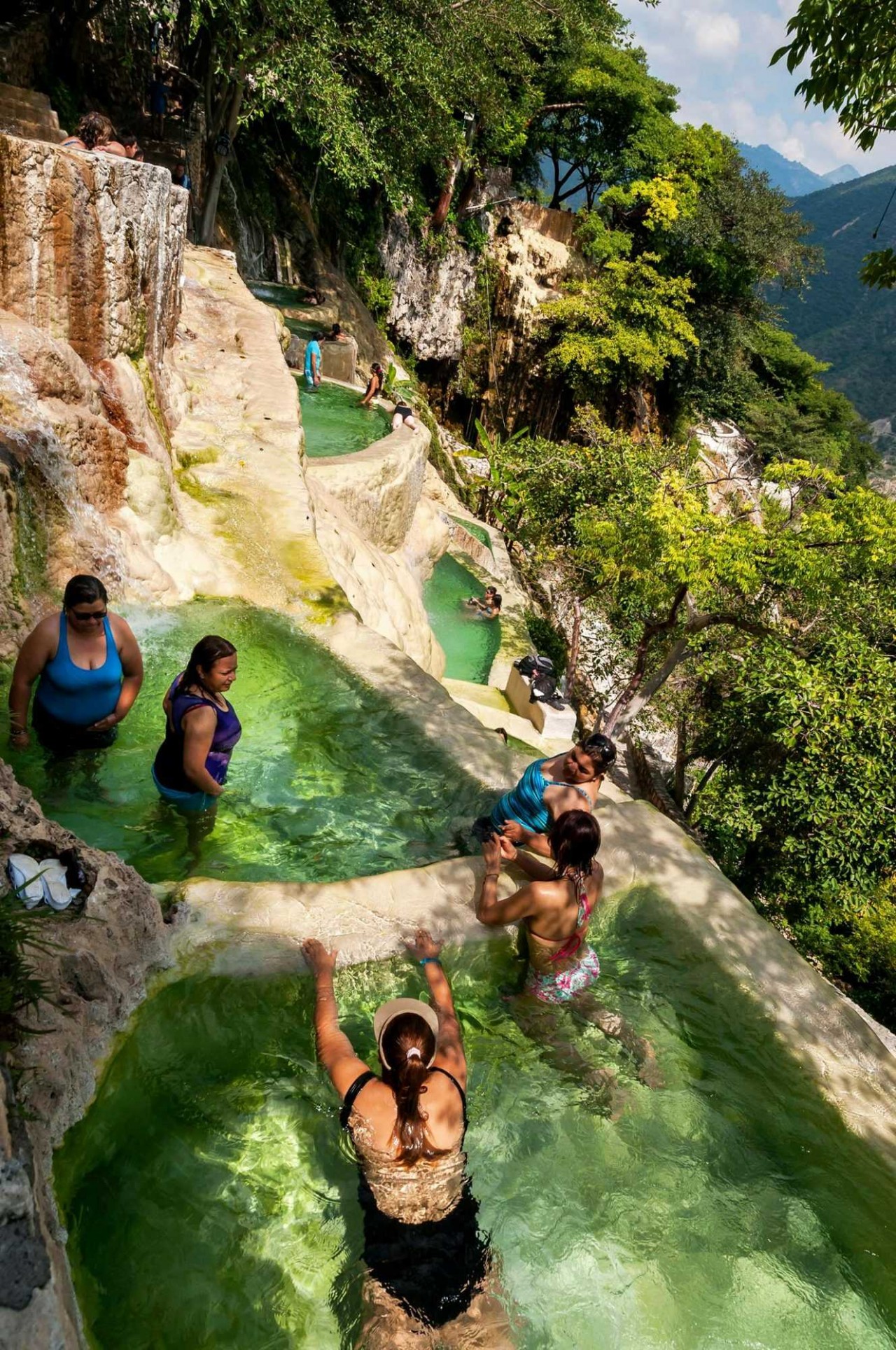 |
| Photo: Travel + Leisure |
There’s also an onsite zip line, suspension bridge, regular swimming pools, hotels, campsites, about 10 restaurants, convenience stores, lockers, medical facilities, and more — Yes, Tolantongo is a big place!
The resort is located in a semi-desert zone, surrounded by rock formations carved by water flow and geological pressures. Exposed rock shows sedimentary layers that have folded. This and water erosion have created capricious forms that are all around this part of Hidalgo state. The high peaks in this area are often shrouded in mist. Cacti and semi-arid vegetation predominate in the hills above the canyon, with pine trees at the higher elevations. The rugged peaks have a great deal of biological diversity. Among the plant species to be found are yucca (Yucca spp), mesquite (Prosopis spp.), tall cacti called “viejitos” (little old ones) (Cephalocereus senilis), named so because their upper spines whiten and flatten, creating a grey-hair-like look, gumbo-limbos (Bursera simaruba), poinsettias (Euphorbia pulcherrima) as well as the abundant magueys that have been used for centuries to make pulque, a fermented beverage. Animals that can be seen include raccoons (Procyon lotor), greater roadrunners (Geococcyx californianus), hooded skunks (Mephitis macroura), white-nosed coatis (Nasua narica) and white-winged doves (Zenaida asiatica). Also, the area has been inhabited by various indigenous peoples such as the Otomi, the Mexica, the Toltecs and the Tepehua.
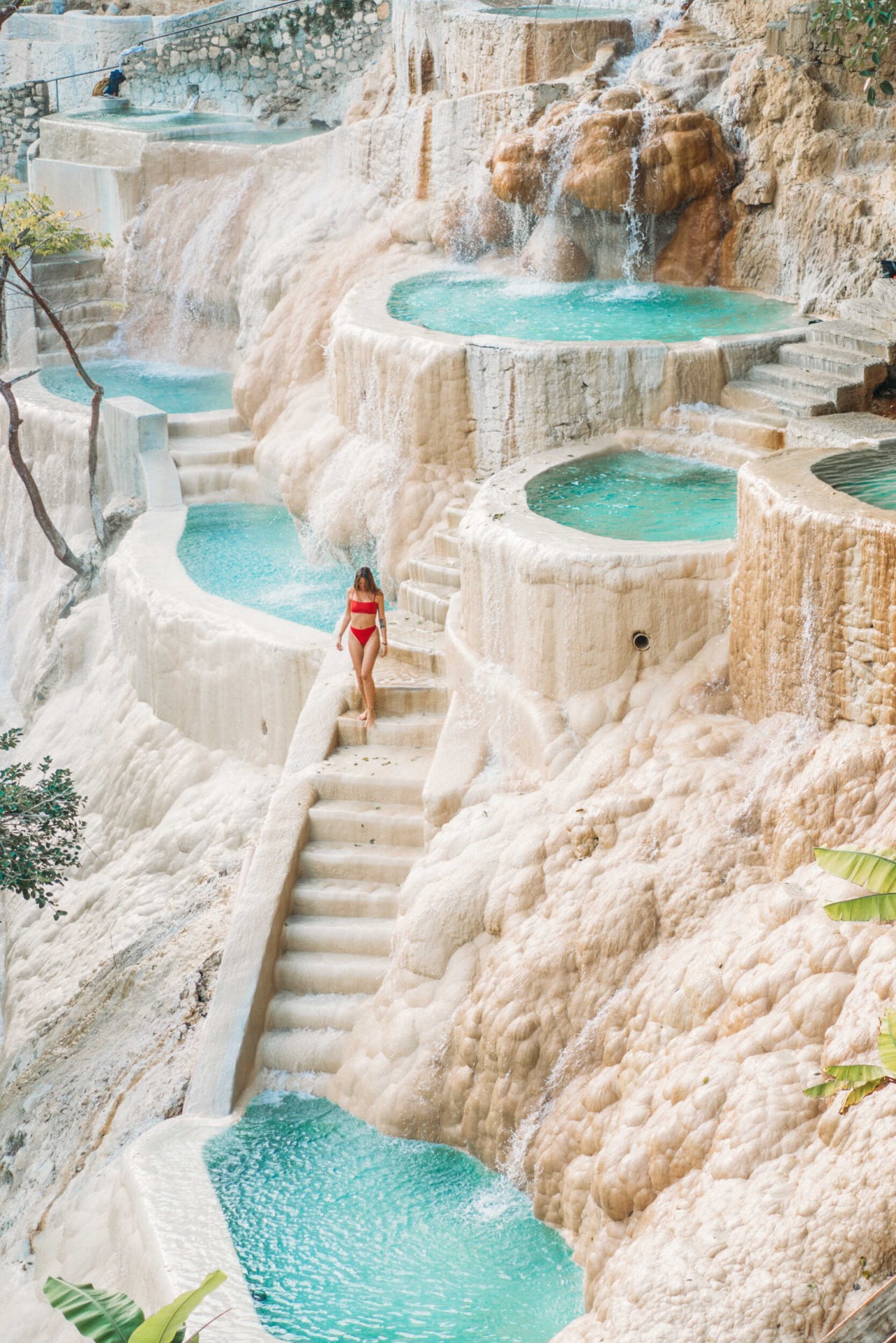 |
| Photo: Life Over Stuff |
To arrive at the resort, one must leave the highway and travel down an unpaved road that winds its way down the side of one of the canyon walls. At the bottom of the canyon, the vegetation changes from semi-desert to semi-tropical due to the abundance of water and the humid warmth the river and falls give to the place. In some areas, the vegetation is quite exuberant. The beauty of the area enticed a Mexican soap opera or “telenovela” to shoot a number of romantic scenes here.
The river
The river in the canyon is also called Tolantongo. It is pleasantly warm, colored by mineral salts it picks up as it passes through the mountain. The water comes from a complex series of channels inside the mountain that heats the water to about 20 degrees Celsius. Much of this water dwells in niches in the rocky side of the canyon, which has a cooling effect. Another factor is that the water mixes with unheated water as it leaves the grottoes. The result is mostly tepid water outside the grottoes and in the river itself, good for swimming even on a cold day.
The grottos
There are two main grottos: the larger one from which the river flows and the “tunnel” above it on the same wall of the canyon. The larger grotto is classified as a karst cave, and was closed for a short time in 2004 due to a roof collapse. Inside this cave, the temperature rises noticeably and it is filled with stalactites and stalagmites. Just outside the main grotto are rimstone pools in which visitors can wallow in the shallow river as the water rushes past. The “tunnel” is called this due to its shape; narrow and about 15 meters long. Visitors inside the tunnel are showered by warm water that sprays out from the walls and ceiling. The temperature inside is similar to that of a steam bath. Inside one part there is a depression filled by a stream of water that one can swim in. This pool is filled with capriciously-shaped rocks. In both grottos, one can listen to the echoes of the waterfalls inside the mountain. It is possible to rappel from the various high domes in these two grottos, but it is still considered dangerous because of the wet walls and large amounts of water vapor in the air.
How to get to Tolantongo Caves
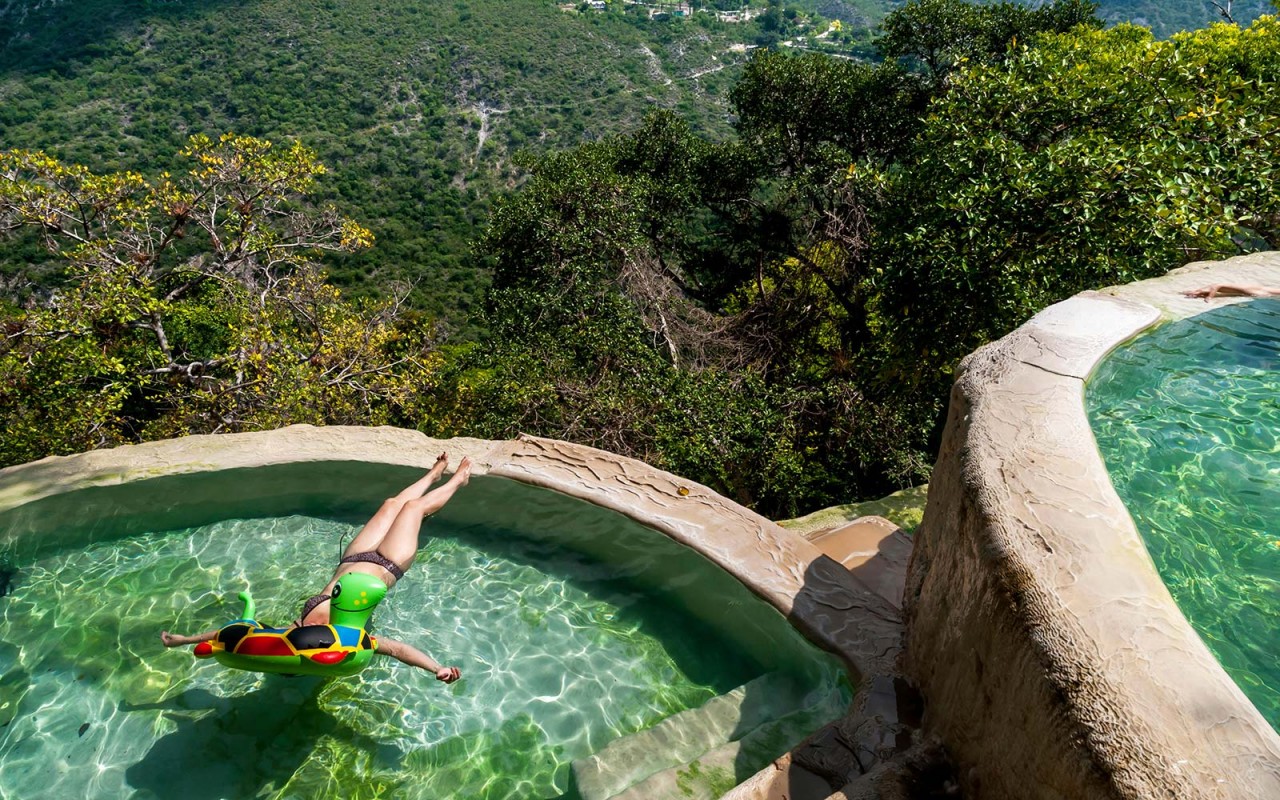 |
| Photo: Travel + Leisure |
To get to Tolantongo Hot Springs without a car, take a bus to Ixmiquilpan, you’ll need to tell the driver to drop you off where you can get another bus to go to the collectivo terminal. It’s not on the map, so just ask around for direction. From there, there’s a bus going every two hours to the cave (every hour on Fridays, Saturdays, and Sundays), but don’t trust the schedule, because the bus won’t leave until almost full, the one after will only leave two hours after, so it offsets completely the schedule.
The first shuttle leaves at 9:30 AM and the last one at 6:30 PM. To come back from Tolantongo Caves, the first bus leaves at 7:30 AM and the last one at 5:30 PM.
If you have a car, you can also come from Mexico City, it’s a 3-hour drive, so even a day trip is an option. Otherwise, coming from Pachuca is the easiest, and there are tons of nice things to do near Pachuca.
Camping in Tolantongo Hot Springs
If you want to camp, choose your spot wisely, some designated areas are on gravel and in the middle of the way, some might get flooded during the rainy season (end of July to August). Winter nights can be pretty cold, so bring blankets. You cant rent everything at the park office or bring your own equipment. You’re allowed to bring your own food and set a bonfire.
If you bring your own tent you just have to pay the entrance fee. It’s a daily ticket, so you’ll need to buy two if you spend the night.
Tolantongo Caves – Fees and opening time
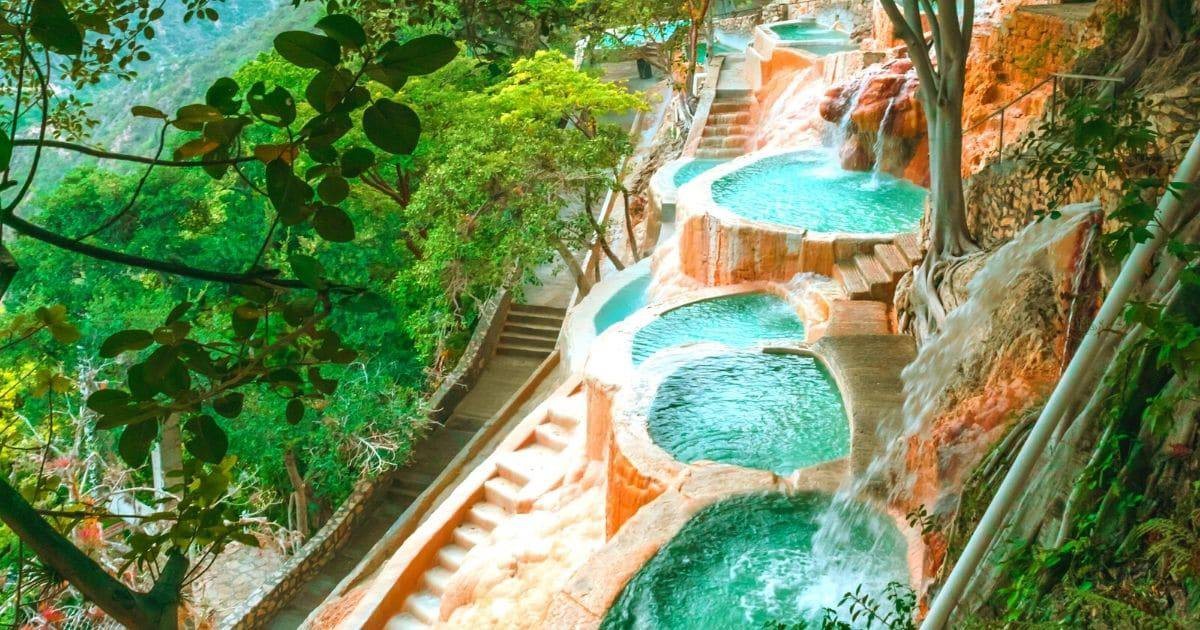 |
| Photo: Travel Mexico Solo |
Tolontongo Hot Springs are open every day, year-round. The ticket office is open from 6 AM to 10 PM. You can access the caves until 5 PM and the river and thermal pools until 9 PM.
The shuttle from Ixquimilpa cost 50 pesos one way, the shuttle from the caves to the pools is 10 pesos. Parking is 20 pesos per day. The entrance fee is 150 pesos per day.
The cheapest hotel room is 650 pesos for two people. Camping is free if you bring your own tent.
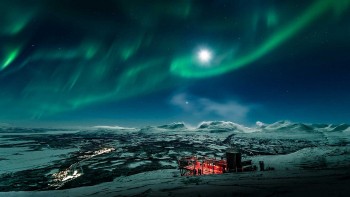 | Top 7 Best Places To See The Northern Lights Each year, Northern Lights attract many tourists to go witnessing this marvelous natural event. Take a look at these best places and spots that you ... |
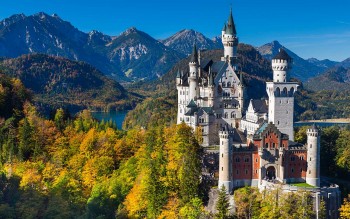 | Top 10 Most Beautiful Castles in Germany Europe is the land of palaces and castle, with outstanding, wonderful architectures. Take a look at these 10 most beautiful castles in Germany. |
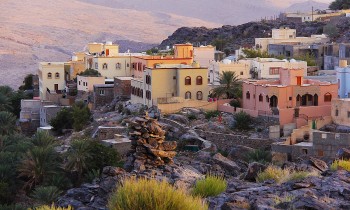 | Discover Interesting Facts About Oman You May Not Know Oman, a small country with beautiful, historic sites and natural wonders, is full of fascinating facts that a lot of people probably do not know. ... |
Recommended
 World
World
Pakistan NCRC report explores emerging child rights issues
 World
World
"India has right to defend herself against terror," says German Foreign Minister, endorses Op Sindoor
 World
World
‘We stand with India’: Japan, UAE back New Delhi over its global outreach against terror
 World
World
'Action Was Entirely Justifiable': Former US NSA John Bolton Backs India's Right After Pahalgam Attack
Popular article
 World
World
US, China Conclude Trade Talks with Positive Outcome
 World
World
Nifty, Sensex jumped more than 2% in opening as India-Pakistan tensions ease
 World
World
Easing of US-China Tariffs: Markets React Positively, Experts Remain Cautious
 World
World






